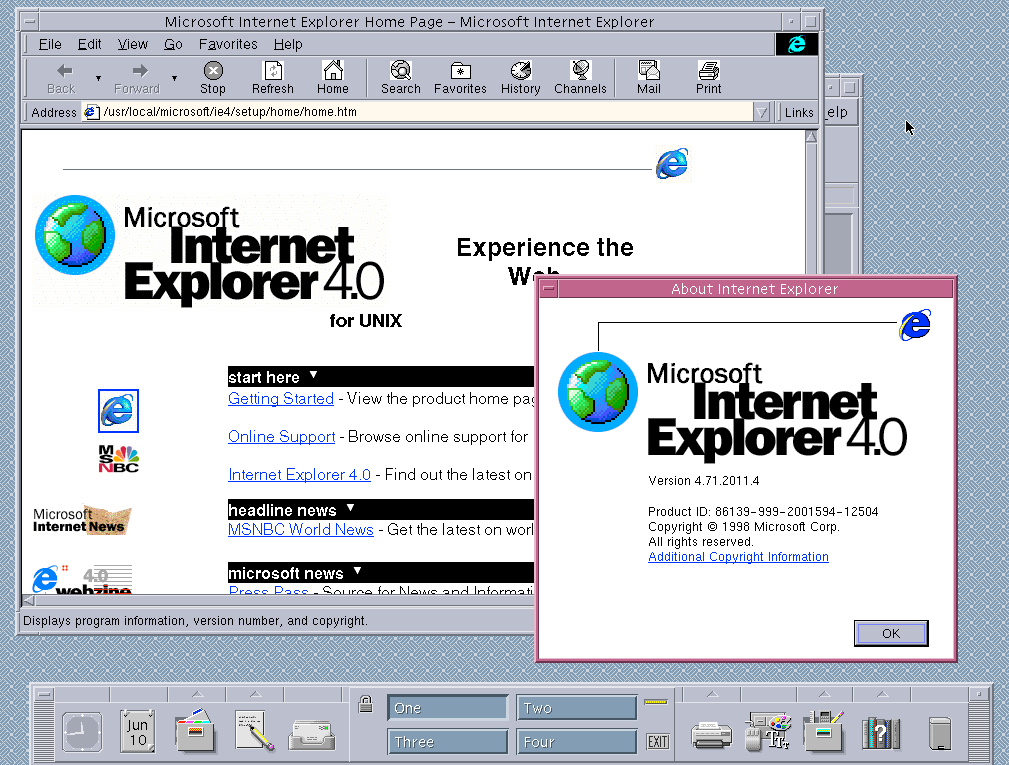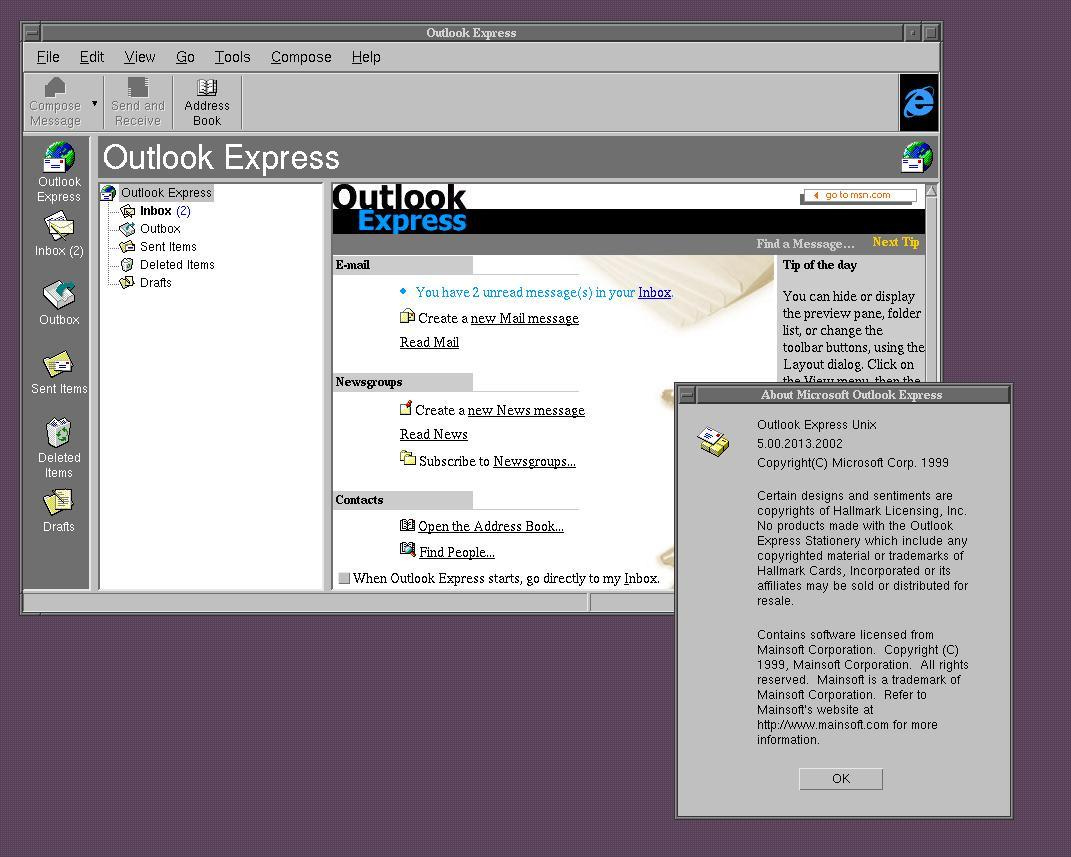Internet Explorer... for UNIX? Yes. It's real.
Microsoft built Internet Explorer for both Solaris and HP-UX. Outlook Express and Windows Media Player are here too!
On November 7th of 1997, the most terrifying headline — in human history — graced the pages of SunWorld magazine:
“It's here! Microsoft's Internet Explorer 4.0 for Solaris provides GUI-based alternative to Lynx”
And… it’s real.
Right about now, you’re asking yourself:
“How can I run the totally amazing Internet Explorer 4.0 on my very own instance of Solaris UNIX? I need this in my life!”
You, my friend, are in luck.
The good folks over at Adafruit put together a tutorial on how to emulate a Sun SPARCstation, running Solaris, via QEMU.
You’ll then want to grab the IE 4 setup files. Luckily you can find these files hosted in various dark, dusty corners of the Internet. Such as this particular dark, dusty corner.
Take “ie4setup.gz”, gunzip it, and — SHAZAM! — you now have Internet Explorer 4.0 on your emulated SPARCstation.
From the Solaris Readme file:
===================
SYSTEM REQUIREMENTS
===================To run the released version of Internet Explorer 5 for Solaris, your
system must meet the following minimum requirements:* A SparcStation 2 or greater
* English Solaris 2.6 and later
* 64 MB of RAM (96 MB recommended)
* 110 MB of hard disk space to perform the installation
Want to really make your UNIX experience filled to the brim with Microsoft-y-ness?
Internet Explorer wasn’t the only piece of consumer software that Microsoft brought over to UNIX in the late 1990s. Check this out… Outlook Express running on Solaris (also available for HP-UX):
In order to get Outlook Express, you’ll want to grab Internet Explorer 5. Which, as luck would have it, is also available.
And then — dig this bit of craziness — you can install Windows Media Player on Solaris too.
Yeah. That’s right. Internet Explorer, Outlook Express, and Windows Media Player… on UNIX. Will wonders never cease.
You can grab Windows Media Player 6.3 (for Solaris) over on this other dark, dusty FTP server. This version was primarily intended to handle streaming media so is pretty bare bones. But, hey, it’s still Windows Media Player. It was developed, at least in part, for Cisco — who wanted it for Solaris workstations.
Fun side-note: I worked at Microsoft, back then, on what was known as the “Windows Media X-Plat” team. We were responsible for porting Windows Media Player to classic MacOS and (you guessed it) Solaris.
The Solaris version of Windows Media Player was primarily worked on by a single developer, if memory serves. In fact, the entire Windows Media “X-Plat” (meaning “Cross platform”) team was incredibly small. A handful of Devs and Testers responsible for multiple platforms.
There’s not a great deal of documentation left on either of these endeavors (which saw the release of Windows Media 6.3, for both Mac and Solaris, back in July of 2000). After scouring through my personal documentation from the time, I’ve found surprisingly few details… so my memory is the best we’ve got on all of this.
Lunduke.Substack.com — Lunduke.Locals.com — Reddit — Twitter
Current subscriber exclusives for The Lunduke Journal:
eBooks: Lunduke's Dad Jokes About Computers, vol. 1, Linux for Hank (kids book), Half a Decade of Linux-y Shenanigans, Lunduke Journal Quarterly - Volume 1, Paper Doll Tux, Road-Sign Hank & the Aliens (comic book), Operating System Not Found (choose your own adventure)
Games: Linux Tycoon (Linux, Windows, DOS), 2299 (Linux, Windows)
+ Exclusive Podcasts, Articles, & 24x7 Telnet BBS Access





